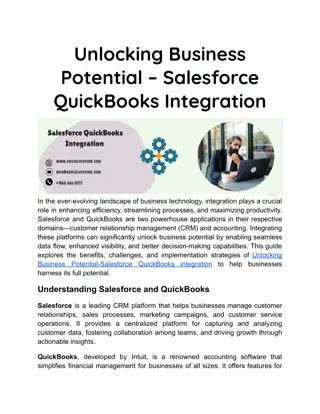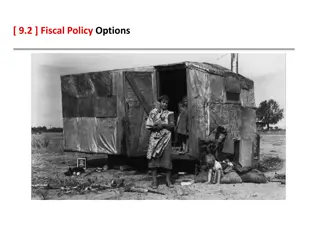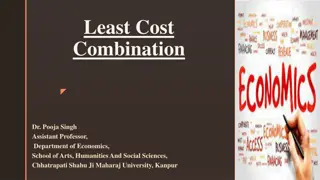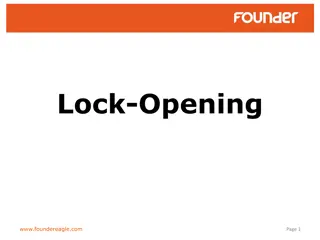Unlocking the Potential of Limited Networks in Healthcare Economics
Explore the impact of limited networks in healthcare economics, focusing on strategies to procure lower prices, provider consolidation, insurer leverage, ACA marketplace dynamics, and the interplay between price, efficiency, and quality. Discover how narrow and tiered networks influence consumer choices and provider efforts in cost containment.
Download Presentation

Please find below an Image/Link to download the presentation.
The content on the website is provided AS IS for your information and personal use only. It may not be sold, licensed, or shared on other websites without obtaining consent from the author.If you encounter any issues during the download, it is possible that the publisher has removed the file from their server.
You are allowed to download the files provided on this website for personal or commercial use, subject to the condition that they are used lawfully. All files are the property of their respective owners.
The content on the website is provided AS IS for your information and personal use only. It may not be sold, licensed, or shared on other websites without obtaining consent from the author.
E N D
Presentation Transcript
Limited Networks Paul B. Ginsburg, Ph.D. FTC-DOJ Workshop on Competition in Health Care February 24, 2015
Economics of Networks (1) Context for network strategies Insurer role as bulk purchasing agent for enrollees Approaches to use size to get lower prices Provider market becoming more consolidated Horizontal mergers Hospital acquisition of physician practices Strong headwind for purchasing 2
Economics of Networks (2) Insurer leverage with providers based on ability to shift volume from high-priced providers to others Network strategy potentially more potent approach than high deductibles and price information Simpler tasks for enrollees less information to gather and process 3
Economics of Networks (3) ACA exchange is ideal marketplace for narrow network plans Enrollee sensitivity to premium differences Affordability a challenge for most in this market Tax credits do not vary with plan purchased Metal tiers make plan comparisons easier Absence of one size fits all requirement Almost half of ACA networks are narrow (McKinsey) 4
Price, Efficiency, Quality (1) Initial focus of limited networks on unit prices Shifting volume to lower-priced providers Negotiating lower prices Longer-term potential to spur provider efforts to contain costs Market-level effects of growth in limited network plans Magnifies stakes for providers 5
Price, Efficiency, Quality (2) Potential to assess broader measures of price and quality Per episode Per enrollee over a year Basis for dropping providers from network An enhancement when analytic tools good enough Analytic parallels in reformed payment Progress in defining bundles and measuring quality applicable to both 6
Narrow vs Tiered Networks (1) Narrow networks more powerful tool Stronger steering incentives Resulting larger discount on premium But tiered networks have potential for broader consumer interest Choices at point of service rather than for a year Popularity of PPOs and tiered formularies More compatible with broadACOs ACO as a tier California model 7
Narrow vs Tiered (2) Why so few tiered networks? Insurance exchanges a favorable environment for narrow network products But employer plans a good environment for tiered networks Contracting practices blocking the approach Provider demands to be placed in preferred tier ( anti-steering ) Supporting tiered networks in Massachusetts Purchasing and regulation of contracting 8
Network Regulation (1) Context of unexpected rapid growth in product Problems arose that need solutions Popularity cautioned policy makers on using regulation to suppress the product Transparency shortcomings Essential to have real-time accuracy on provider directories Part can be done through IT May need more structured contracting 9
Network Regulation (2) Network adequacy Consumers need most support on specialists for conditions they do not currently have Less support on whether PCPs close enough Also need to prevent risk selection through lack of specialists for expensive conditions But assessing adequacy of specialists is very difficult Especially given increasing sub specialization Alternative of strong appeals process 10
Network Regulation (3) Physicians that patients do not choose Compelling challenge that applies to all networks Any Willing Provider laws Most date to 1980s Magnitude of new interest not clear; SD unique Particular threat to cutting edge approaches to networks Using broad measures of price and quality Plans limited to a major delivery system 11
Concluding Thoughts Narrow networks a particularly potent competitive tool to address high and rising medical prices Substantial evolution likely Analytics to help measure more meaningful prices and quality Regulation of transparency and network adequacy Potential for tiered networks depends on regulatory steps to support 12























